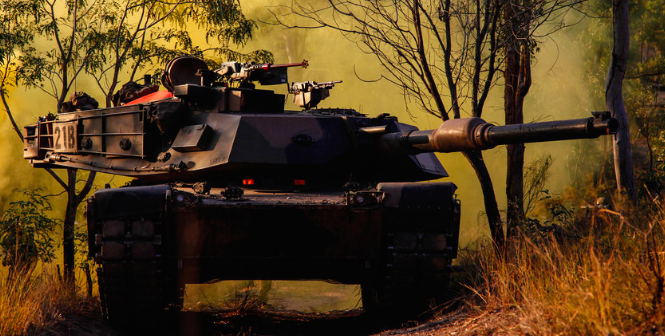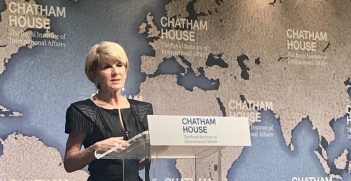Restructuring Australia’s Defence Empire

The defence industry is still digesting the fallout from the wide-ranging First Principles Review, which resulted in the closure of two agencies – and some unanswered questions.
The First Principles Review of Defence titled Creating One Defence (referred to as the Peever Review) recommended a new oversight structure for Defence capital equipment procurement and sustainment, without a clear blueprint for how the new arrangements will work. The changes will impact on the defence industry. To what extent is unclear.
The Review called for abolition of the Capability Development Group (CDG) and Defence Materiel Organisation (DMO). This formally occurred on 30 June 2015.
CDG’s functions will be dispersed to “more appropriate areas”. DMO’s core responsibilities in relation to capability delivery will transfer to a new Deputy Secretary, Capability Acquisition and Sustainment (Dep Sec CA&S). The Service Chiefs for Navy, Army and Air will now have responsibility for service specific capability needs and requirements functions. Their current responsibility for sustaining capability will remain. Dep Sec CA&S will be critical to ensuring major cultural and structural improvements to defence procurement.
The roots of the recommendations of the Review related to capability delivery have been driven by industry, including by the Ai Group Defence Council. This has resulted from the complexity and high cost for industry of doing business with the Defence department. With the Abbott Government focused on reducing “Red Tape”, it’s entirely appropriate that Defence further contribute.
The Peever Review offers the most wide-ranging restructuring of the Department of Defence since the Tange reforms of the mid-1970s. Other reviews, such as Kinnaird and Mortimer, also led to major changes in the structure of the capital equipment procurement area of the portfolio. The former recommended creation of both the CDG and DMO. The latter affirmed retention of both.
Priorities in the new procurement stream must include a focus on delivering capability on time and on budget, early and regular industry consultation, application of proven commercial practices and further streamlining. Agility is the principal key to future procurement success.
From my viewpoint as a participant in a number of award reviews of capability delivery, including sustainment in recent years, there are examples of the current procurement system working effectively. Many reviews of Defence over the past 20 years have highlighted that this is not always the case. The Projects of Concern list, established by the previous government, affirms this.
The Projects of Concern list initially saw more than 20 projects which had either been delayed, had proceeded well over budget or were a combination of both. A number of the projects were of a complex development type, involving considerable risk. An example is Wedgetail, which is now operating successfully in the Middle East. However, it had a long gestation. Other projects were poorly executed (e.g. FFG modernisation). These ships are now operating effectively in RAN service, including along the African coast against pirates. However, the Seasprite debacle confirmed the fraught nature of seeking to incorporate advanced technologies into 1960s-designed platforms. The list is now down to a handful, to the credit of both the defence industry and the DMO. Remediation of projects on the list has provided valuable lessons for current and future capability acquisition. There is a strong incentive for industry and departmental project office players not to appear on the list.
On sustainment, the non-availability of HMAS Tobruk for cyclone relief in far North Queensland highlighted limitations in sustainment arrangements. These have largely been addressed.
Early and regular consultation with industry on planned capability acquisitions is essential. Various mechanisms have been tried, not always successfully. An exception is the CEO of the DMO’s regular defence industry CEO’s round-table, which have proven to be valuable.
The time to get to contract has long been a bug-bear for the defence industry. Defence Capability Plans have foreshadowed the likely timing of the release of Requests for Tenders, with a reasonable indication of successive governments’ planned introduction into military service of individual capabilities. On occasions, these plans have not come to fruition, with extensive delays in release of tenders quite common.
An added industry frustration has been the practice of extensive, unnecessarily time-consuming contract negotiations. Commercial acquisition experiences, which are the domain of most defence contractors, are often not duplicated in defence procurement. This should not be the case, as many projects are quite straightforward – or at least should be. As Peever observes, agility is paramount.
Tender documents are often far too lengthy. As the former Chief of Air Force recently said at the Avalon Air Show in relation to the Project Air 5428 – Pilot Training System, the tender document is more than 3000 pages in length, is complex and difficult to understand, even for an engineer such as himself. His Singaporean counterpart had recently advised that a similar tender in his country amounted to less than 50 pages.
Some of the clauses in tender documentation, such as Unlimited Liability, are an anathema to companies. Can anyone applying a common sense test appreciate the absurdity of asking an SME to accept such a clause? Others, such as improvements to insurance clauses, have been substantially improved in recent years.
For those of us who experience monopoly behaviour at airports, it’s the case that the defence industry feels that it observes similar traits in dealing with the Defence monopsony. It is to be hoped that the Peever Review recommendations, if fully implemented, will overcome this burden. The defence industry will be watching closely.
John O’Callaghan is the Executive Director of the Australian Industry Group Defence Council. This article can be republished with attribution under a Creative Commons Licence.





